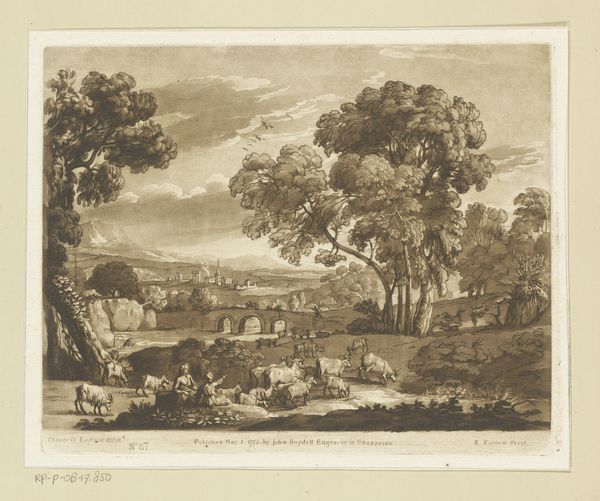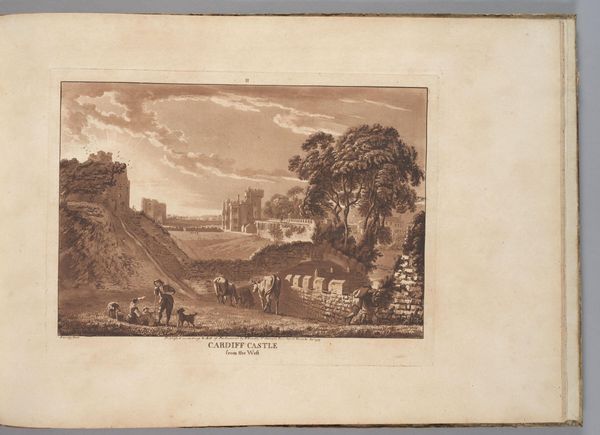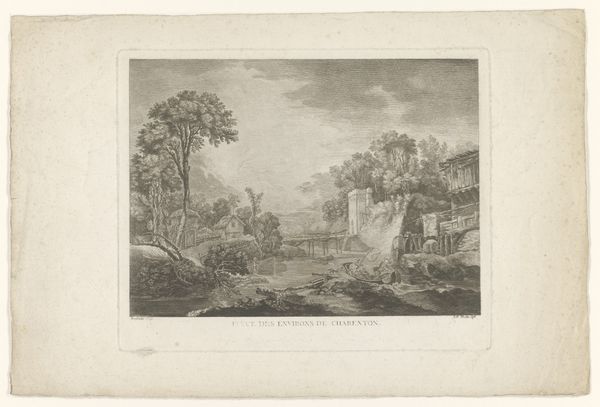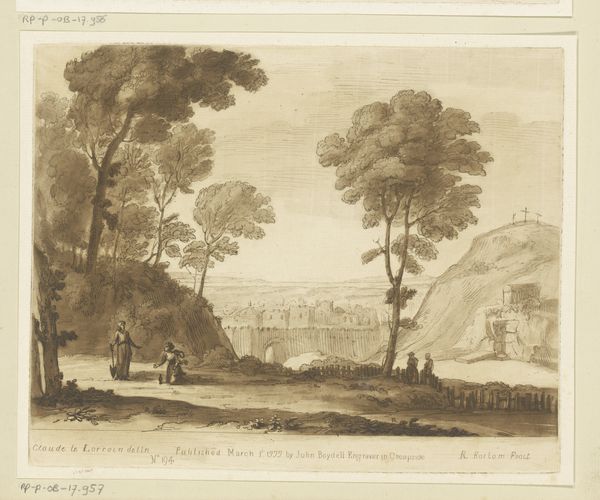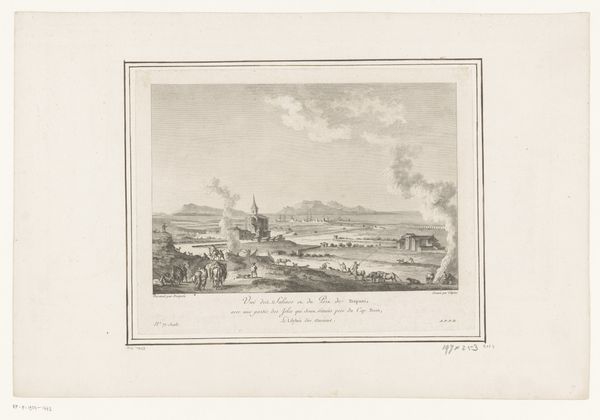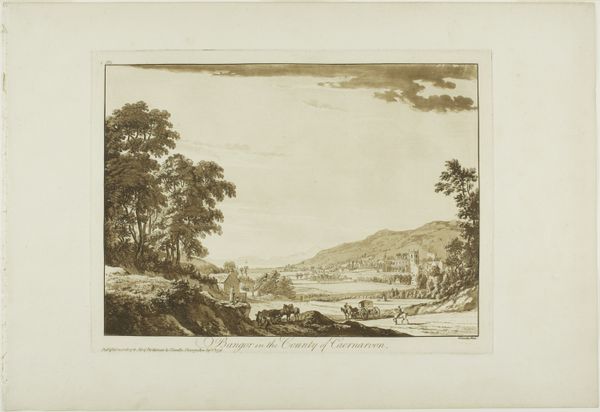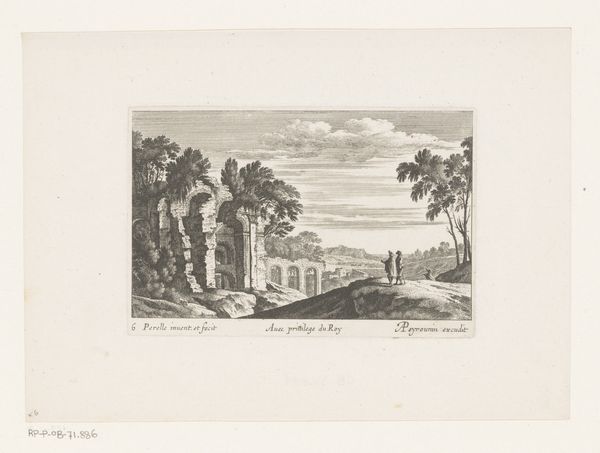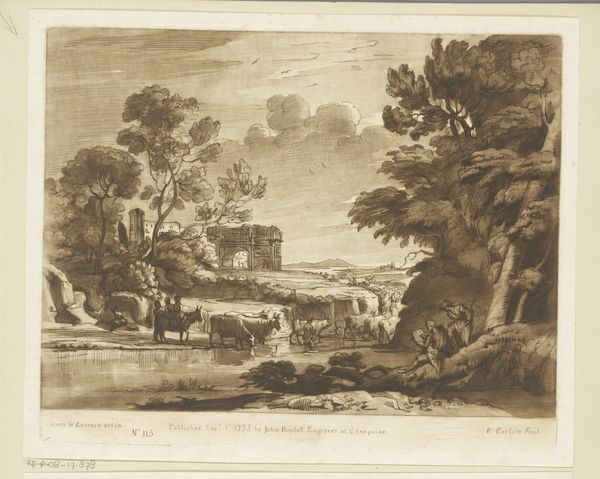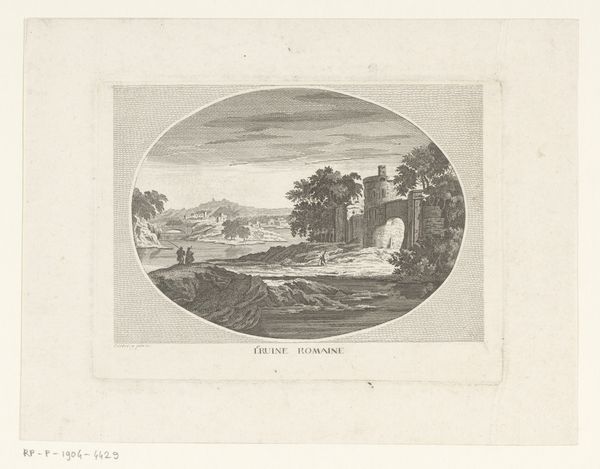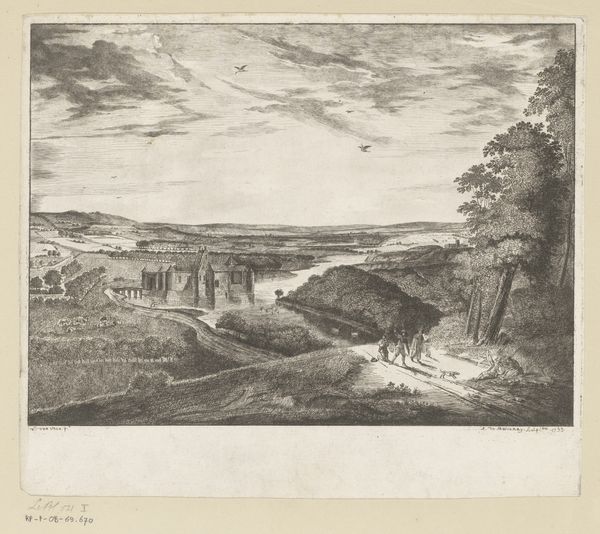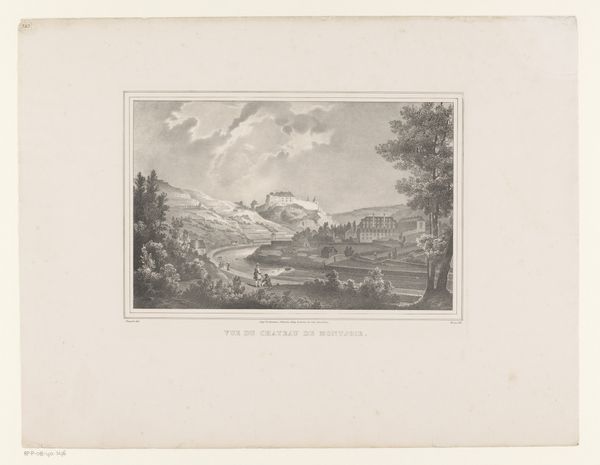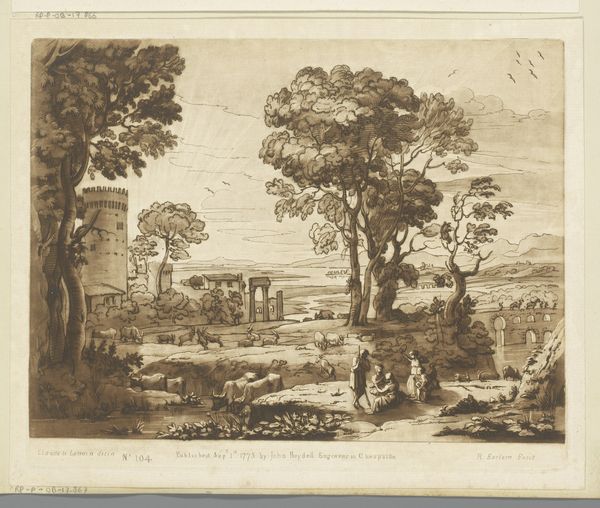
aquatint, print, etching
#
aquatint
# print
#
etching
#
landscape
#
cityscape
Dimensions: 302 mm (height) x 417 mm (width) (billedmaal), 374 mm (height) x 466 mm (width) (Plademål)
Editor: So, here we have "Trondhjem" made sometime between 1767 and 1824 by Andreas Flint. It's an etching and aquatint print. It’s so detailed, but feels very dreamlike too with that sepia tone. What strikes you when you look at this? Curator: Immediately, the technique interests me. Combining etching and aquatint – two distinct printmaking processes – speaks to a very deliberate and labor-intensive process. Consider the materials available to Flint and the social context of printmaking. It was a form of mass production but one reliant on skilled labor, unlike the automated processes of today. Editor: Mass production even back then, that's interesting! So, how did those techniques affect what could be depicted and how it could be seen by others? Curator: Aquatint, especially, allowed for subtle tonal gradations, mimicking the effects of wash drawings. Etching, with its fine lines, provides the precise detail of the buildings and figures. Together, they made landscape accessible to a broader public. Who had access to it and how was it used? It becomes a commodity but also potentially, a shaper of public perception. Look at the way Flint frames the city. Editor: I guess it does idealize it a bit, like a tourist advertisement from back in the day! Are there other ways of seeing the image or its creation, that seem important? Curator: Considering the physical process challenges that distinction between 'high art' and craft. The hand of the artist is clearly present, mediating the representation of the landscape through labor and technical expertise. This act of creating, distributing and viewing it changed perceptions. Editor: So, even in what might seem like a simple landscape, there's this whole world of production and consumption at play! I never thought about prints in quite that way. Curator: Exactly! It’s about recognizing how materials and processes reflect social and economic conditions, and shape our understanding of art.
Comments
No comments
Be the first to comment and join the conversation on the ultimate creative platform.
